The Whitetail Food Plot Blueprint
Feeding Frequency, the Food Plot Pyramid, and the ½ & ½ Structure Method
FOOD PLOTS
Owen Brick
7/6/20257 min read
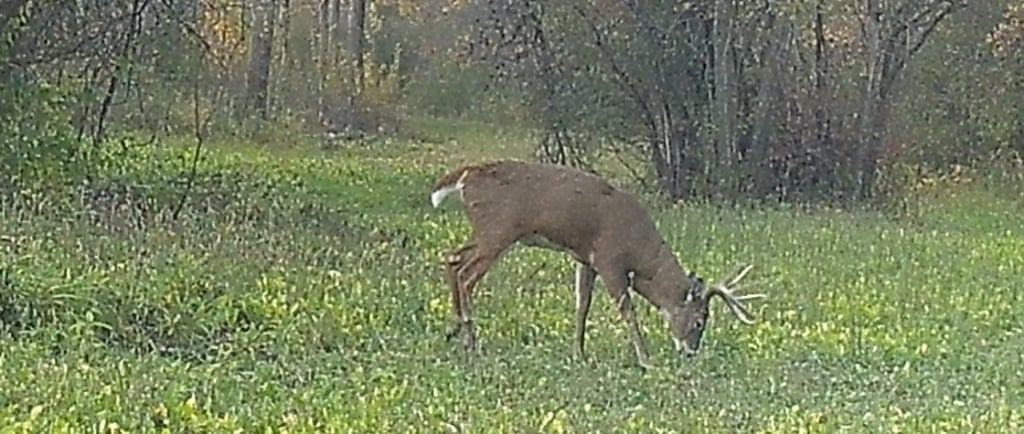

Understanding how often whitetail deer feed and what drives those feeding habits is the foundation of a successful habitat management strategy. Deer feed five times in a 24-hour period, each of which holds their own value. To consistently attract and hold deer on your property, you need more than just a random food plot; you need a strategic approach. That’s where the food plot pyramid comes in: a structured visual of food plot priorities. In this article, we’ll break down how deer feed throughout the day and how you can structure your food plots to match those patterns and maximize your hunting success.
FEEDING FREQUENCY
Food is the foundation of all deer movement. Without a dependable food source, your ability to manage the herd effectively is nearly nonexistent. To understand why quality food is essential, you first need to understand when and why whitetails feed the way they do.
Whitetail deer feed five times over a 24-hour period. As rhythmic pattern feeders, much like babies, they follow a consistent daily schedule, unless disrupted. This predictability creates reliable opportunities for hunters wherever a whitetail roams, as deer will repeat the same patterns day after day.
Here’s a breakdown of each feeding:
1st & 2nd Feedings (Bedding)
The first and second feedings occur within the bedding areas. The first feeding typically takes place around daybreak, and the second feeding follows in the late morning. During these times, deer browse on woody browse such as shrub tips, briers, hardwood regeneration, seasonal mast (acorns, chestnuts, walnuts), and more. These food sources are tougher to digest, which makes the third feeding, focused on easier-to-digest greens, even more significant.
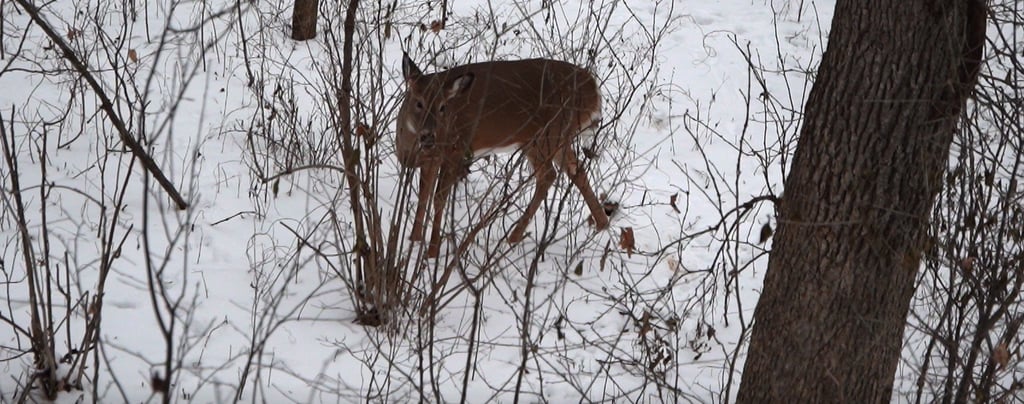

3rd Feeding (Evening Feeding)
The third feeding is the most important of the day, and on private land, it must be under your control. This evening feeding should occur at a high-quality food source located on your property. If you can control this feeding along with the two bedding feedings, you become the herd influencer, shaping both the quality and quantity of the deer frequenting your land.
This third feeding should feature high-moisture, easily digestible greens. Think of it this way: deer have been consuming woody browse all morning, and now they cannot wait to go wash it all down with high-quality greens.
However, it's not enough to control just one part of the equation. If you only control the third feeding, but not the first two, it likely means deer are bedding elsewhere and traveling onto your land in the evening, making them vulnerable and inconsistent. Conversely, if you control only the morning bedding feedings but not the evening food source, your deer herd will leave your property to feed elsewhere. In either case, you lose.
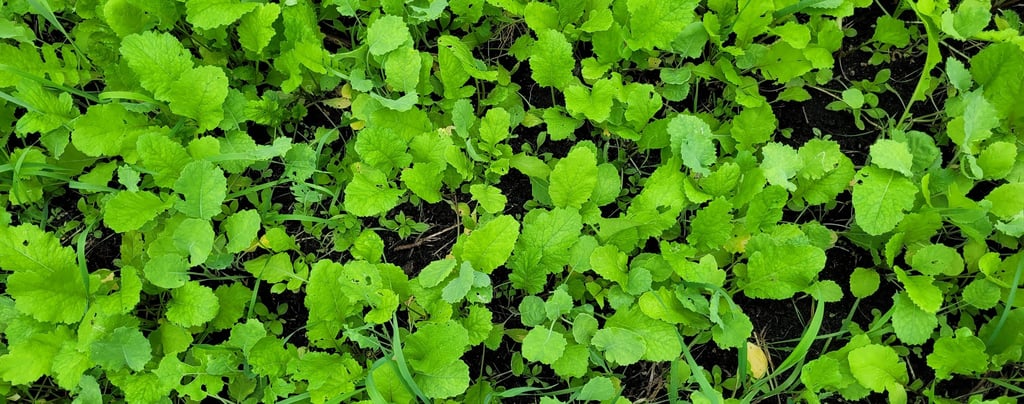

4th & 5th Feedings (Night Feedings)
The fourth and fifth feedings occur after dark, late at night, and again a few hours before dawn. These feedings can take place in neighboring ag fields, food plots, open hardwoods, or any number of other locations. The key takeaway is this: You do NOT want these nighttime feedings to occur on your property.
Why? Because deer would be consuming your food sources when you can’t hunt them. Nighttime activity on your plots often signals that you've over-pressured your land, causing deer to avoid daylight movement on your property. When this happens, they’re likely feeding somewhere else during that all-important third feeding, and you're no longer the herd influencer.
Your goal should be to have deer hit your evening food sources (feeding #3), then leave your property at night. What matters most is that you control daylight movement. That’s where the real influence and opportunity lie.
Exception
In large wilderness areas, a different dynamic comes into play. If you plant a high-quality food source in a location where alternative forage is scarce or low in quality, deer will likely consume it relentlessly, often down to the dirt shortly after planting.
In these environments, where nutritional options are limited or nonexistent, your plot may serve as the only viable food source. As a result, deer may utilize it for all five feedings throughout the day and night.
Regions such as Northern Michigan and Northern Minnesota are prime examples where this scenario can occur. In cases like these, strategic planning, plot size, and planting frequency become critical to sustaining a usable food source over the course of the season.
FOOD PLOT PYRAMID
When deciding what to plant in a food plot, Jeff Sturgis’ Food Plot Pyramid serves as an excellent framework for setting priorities and maximizing impact. The pyramid helps visualize how different food sources should be layered based on importance and seasonal value
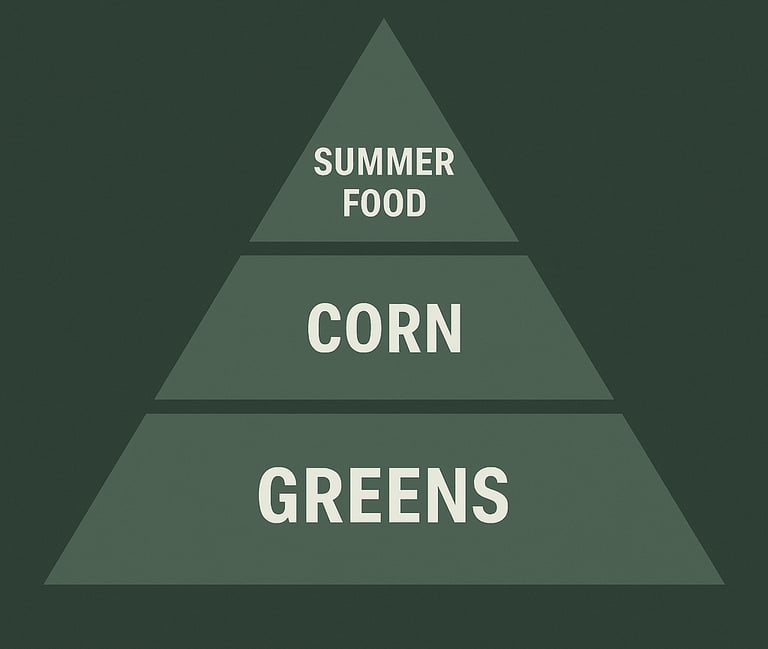

GREENS
At the base of the pyramid, and your food plot strategy, is annual greens. This is your top priority. As discussed earlier, deer crave lush, nutrient-rich green plots, and mature bucks will travel significant distances to find them.
If you’re managing a small property, roughly 100% of your food plot acreage should be dedicated to greens. But keep in mind, there’s no such thing as a cookie-cutter food plot plan. Every property is unique, and your approach should reflect the local habitat, resources, budget, etc.
An effective annual green base may include: peas, brassica, rye, wheat, oats, and late-planted beans. THIS article breaks down exactly what to plant in your green blend for optimal results!
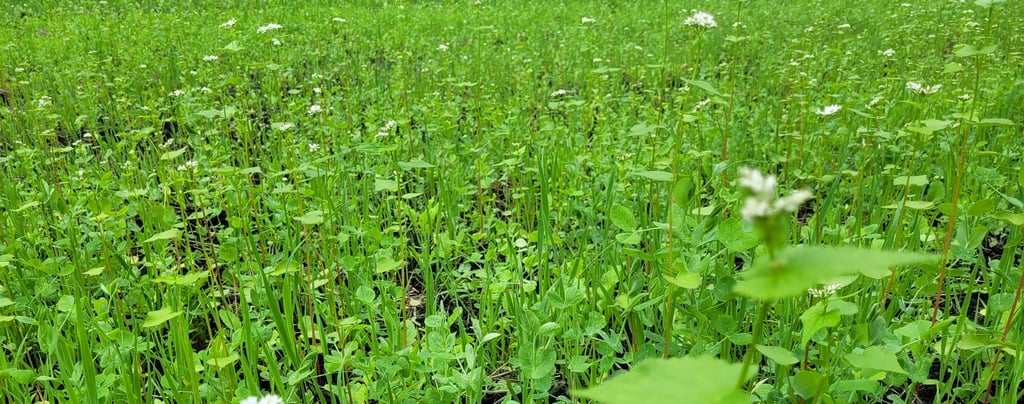

CORN
Next up in the pyramid is corn, a fantastic food source for the late season, especially when natural forages become scarce. Corn offers high volume and energy-dense calories that deer seek out from mid-November through December and beyond.
That said, corn should only be planted after a green base is firmly established and if you have additional plot space available. When planted strategically, especially next to greens, corn can create a deadly late-season combination.
Corn has its place, but it’s supplemental, not foundational.
SUMMER FOOD
The final layer of the food plot pyramid is summer food, and this one requires careful consideration. A deep dive into summer food strategies will come in a future article, but for now, here’s the bottom line:
Avoid summer food plots unless your goal is to dramatically increase your local herd size by attracting and holding does and fawns. Why? Because summer food plots often turn into doe factories - a serious predicament that plagues the majority of whitetail hunters throughout the country that makes managing mature bucks significantly more difficult. Additionally, summer plots provide food when you can’t hunt and when natural vegetation is already abundant.
Some argue that summer food is essential for antler development and fawn growth. While nutritious summer food certainly supports those processes, the truth is: deer already have plenty of natural forage during the summer months. Deer don’t die from starvation in summer. They die in late fall and winter. If your goal is to help deer survive and thrive, focus on quality fall and winter food sources. That’s when deer need energy the most. Give them what they need when it matters - not when they don’t need it.
Food Plot Structure: The ½ & ½ Method
As a foundational layout strategy, nearly all green plots should follow the ½ & ½ method - a proven design that maximizes attraction and nutritional value throughout the hunting season. See the diagram below for a visual reference.
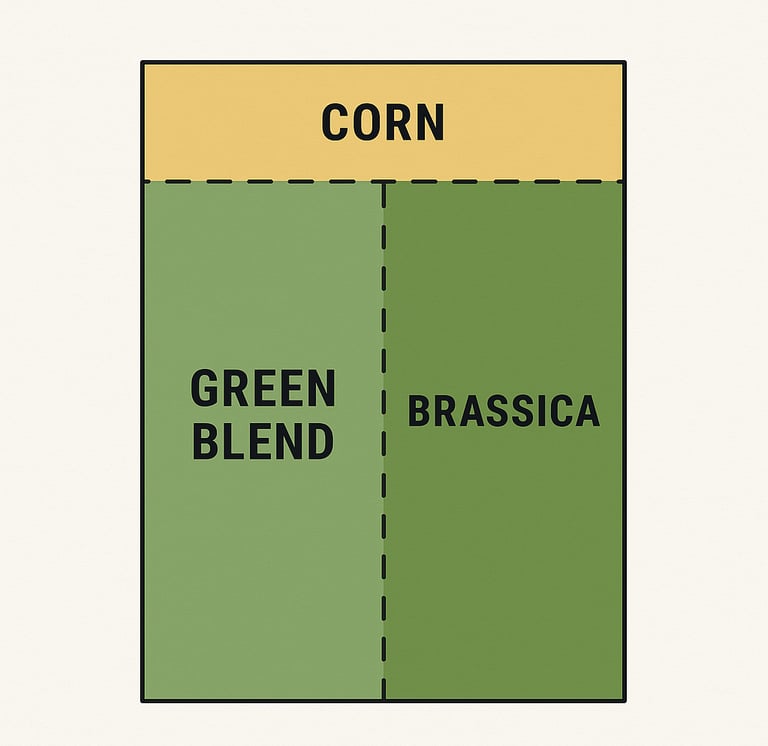

This method divides a green food plot into two equal halves: Half in brassicas, half in a blended green mix.
Green Blend: Early to Mid-Season Attraction
The green blend side features “candy crops” - highly attractive, palatable forages that draw deer in from the early season through mid-fall. Around Labor Day, this half should be top-dressed with winter rye, extending its attractiveness and nutritional value well into the season.
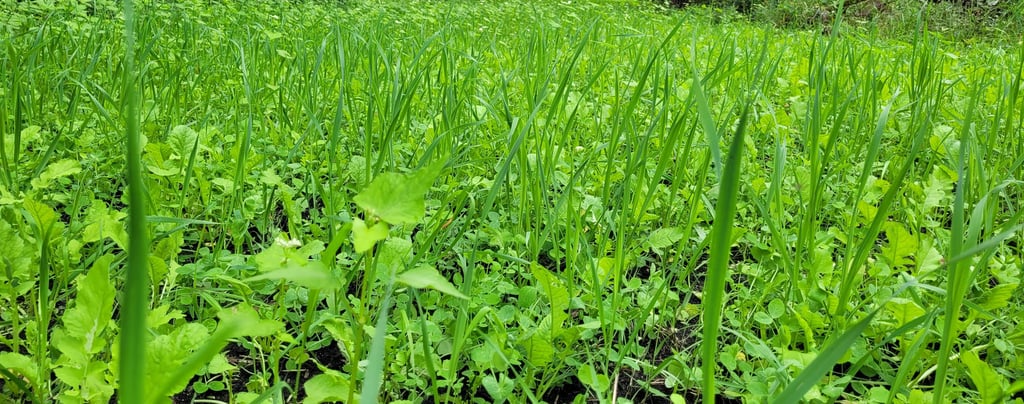

Brassicas: Mid to Late-Season Nutrition
As the green blend begins to diminish in nutritional value later in the fall, deer will naturally shift over to the brassica half, which will be peaking in both value and nutrition, right when deer need it most. This timed transition allows your plot to provide season-long utility with minimal input.
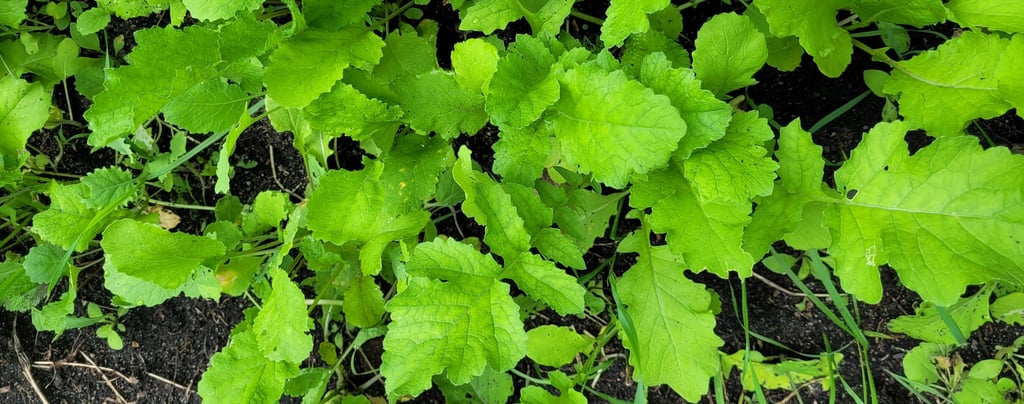

Corn for Late-Season Power
If your property has enough acreage and meets the right conditions, adding a plot of corn along the perimeter can significantly boost the overall effectiveness of your food plot strategy, especially during the harsh late-season window.
CONCLUSION
The foundational strategies discussed in this article are essential for any land manager or hunter aiming to develop an effective food plot program and establish themselves as a true herd influencer. Understanding when and where deer feed throughout the day gives you the power to make strategic stand placements based on reliable, patterned movement, not guesswork. The Food Plot Pyramid offers a clear framework for setting planting priorities, while the ½ & ½ method provides a practical, season-long layout that aligns with deer behavior and nutritional needs. Implement these strategies to increase your whitetail hunting success for this fall and for years to come!
Copyright© 2025 WHITETAIL SYSTEMS AND SERVICES, LLC
